NIL
NiJaree Canady, Texas Tech softball ride ‘selfless’ attitude to WCWS finals
Why Texas Tech, Texas will win 2025 WCWS It’s a Lone Star State Women’s College World Series this year, and reporter Jenni Carlson breaks down one reason Texas Tech will win and one reason Texas will win the WCWS. OKLAHOMA CITY — It took NiJaree Canady until the Women’s College World Series finals to admit […]

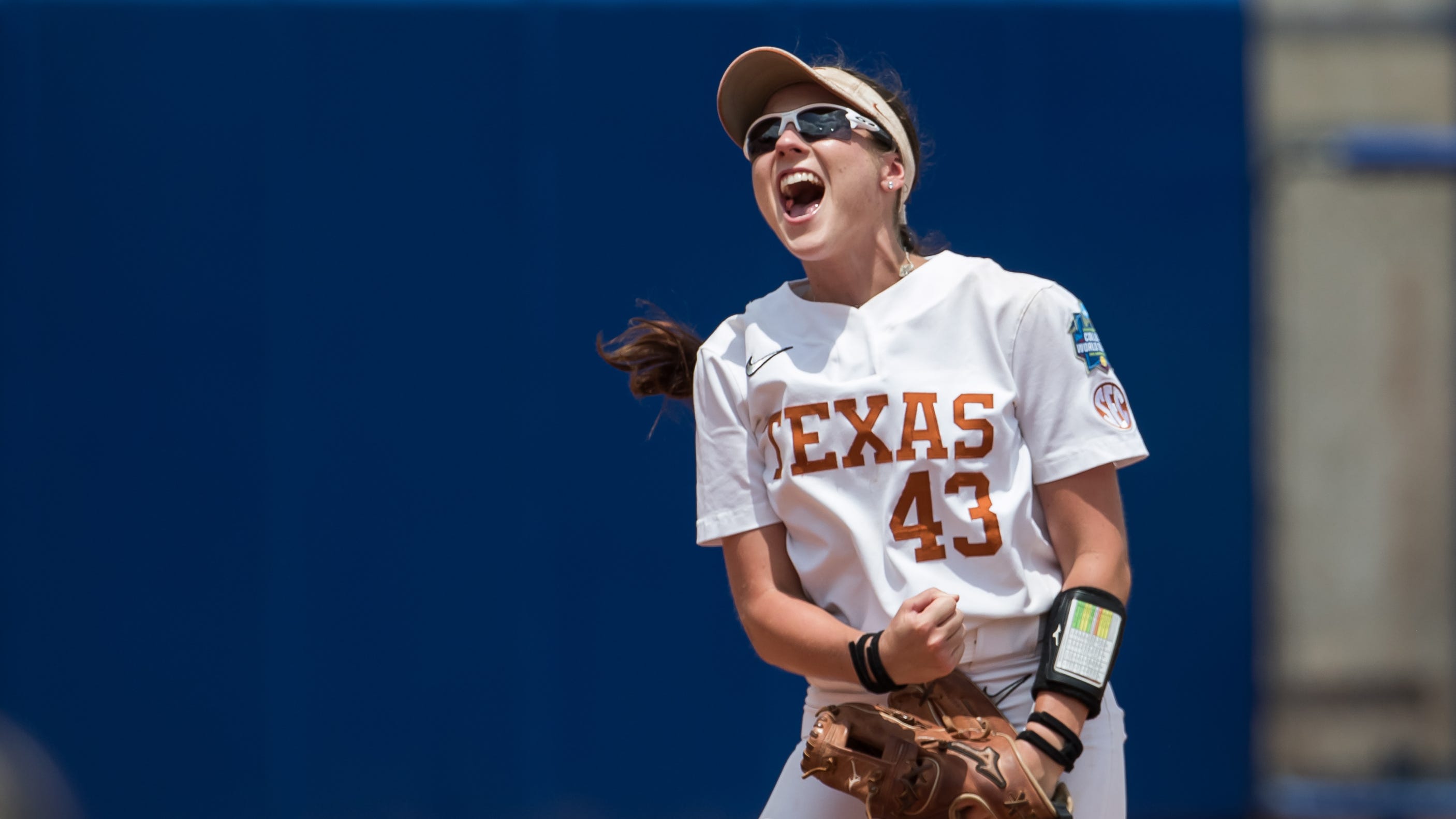
Why Texas Tech, Texas will win 2025 WCWS
It’s a Lone Star State Women’s College World Series this year, and reporter Jenni Carlson breaks down one reason Texas Tech will win and one reason Texas will win the WCWS.
OKLAHOMA CITY — It took NiJaree Canady until the Women’s College World Series finals to admit this season has been hard.
Not only has the best pitcher in the country been put under the microscope for her name, image and likeness deal with the Matador Club to join the Texas Tech softball team, Canady also spent the bulk of the 2025 season with an injury everybody knew she had, though the extent of which was hidden until recently.
On Monday, before playing Oklahoma in the semifinals, Gerry Glasco revealed to a radio show that Canady spent much of the year playing with a torn hamstring. The injury occurred in the Feb. 26 game at North Texas, where Canady, playing first base for the first time, stretched out to get the out. She came out of that game in Denton, and Texas Tech wound up losing 6-5 on a walk-off home run.
“I just know it was a really serious injury,” Glasco said Tuesday, “that was going to take eight or nine weeks to get over completely.”
Canady was back in the circle three days later, leading the Red Raiders to a 7-2 win over then-No. 5 Texas A&M. The injury, Glasco said, would have shut Canady down until she recovered had it been in her right leg. Since it was in her left, Canady was able to continue pitching but had to make concessions elsewhere.
Midweek bullpen sessions were eliminated, as was hitting, something that played a major factor in Canady’s decision to transfer from Stanford to Texas Tech. For about a month, Canady pitched in games, and that was about it.
“Honestly,” Canady said, “I think the results said it was worse than it was.”
Canady said the injury is a bit overblown, and she spent the better part of two months pitching through it. The million-dollar arm continued to excel in the circle, battling through obvious pain and discomfort. She never said anything about it.
During the time Canady was pitching on a torn hamstring, she totaled 114⅔ innings with a 0.98 ERA across 19 pitching appearances. That ERA, even with the injury, would rank as the best in the country.
“We didn’t talk a lot about it, but it was a significant setback,” Glasco said, “… and then to still have the results that she did, to show what a tremendous competitor and what a tremendous talent she was.”
After earning the game-winning sacrifice fly against Oklahoma, Lauren Allred said the team chose a word to live by this season. That was was selfless, and it exemplifies Canady pitching through the pain and not telling anybody about it.
“NiJa’s a tough competitor,” Texas Tech pitching coach Tara Archibald said, “a team-focused individual. I’ve never met a player with as much talent as NiJa has, who thinks about the team more than anything in the world, and it just says who she is.
“She didn’t have to battle through that. She didn’t have to play through that. But this was NiJa’s goal. NiJa wanted to win a national championship, and she knew if we lost those games in the middle of the year, we wouldn’t have a chance to do it and she was determined to put is in a spot to be able to do it, but that’s just who she is as a person and says a whole lot about her.”
Getting to the Women’s College World Series finals wasn’t an easy trek. Not only were the Red Raiders figuring themselves out, they were doing it with a hobbled workhorse. The only way it was going to work was with everybody doing their part, something Texas Tech’s roster has done throughout the postseason run.
“I think we’ve been playing selfless and playing for each other,” Allred said, “and that’s helped us get through all the tough games.”
Much has been made about what Canady has brought to Texas Tech, the softball team and the athletic department as a whole. Glasco said when the Red Raiders signed her, he was told nearly 1 million stories were generated around her NIL deal. But her value, the coach said, is incalculable.
“I think,” Glasco said, “when you look at how she endured injury, she endured a young team around her, or a new team around her and with a new coaching staff and went through with a new pitching coach, and then she’s got a new hitting coaching working with her on hitting, just total adjustments, but throughout all that, no matter what, she was just rock solid in the circle for us and provided us with that solid stone cold assassin out there in the circle that allowed us to grow and become a really good softball team at the end of the year.
“I think it even surprised us.”
Glasco likened Canady to Superman for her ability to compartmentalize everything around her and power on. Even Superman has a weakness, and while Canady will never complain about her circumstances — if she’ll tell anybody about them at all — getting to this point has been anything but a breeze.
“Honestly,” Canady said, “this year, it’s been hard, just for me personally. I’ll say this, too, I feel like we had a lot of road bumps, and this was not an easy ride.
“We actually were joking about it on the bus, if you would have asked us earlier in the year, earlier in the preseason if we would be two games away from hoisting a National Championship trophy, we would probably laugh. We took some hard losses early on.
“Honestly, just feel like we’ve just grown as a team. Part of the road getting here is peaking at the right time. I feel like we’re finally just catching our step, and we’re getting to know each other on the field, and I feel like we’re just playing for each other right now.”
2025 Women’s College World Series Championship
Best-of-three series at Devon Park, Oklahoma City
Wednesday, June 4
- WCWS finals Game 1: Texas Tech vs. Texas, 7 p.m., ESPN
Thursday, June 5
- WCWS finals Game 2: Texas Tech vs. Texas, 7 p.m., ESPN
Friday, June 6 (if necessary)
WCWS finals Game 3: Texas Tech vs. Texas, 7 p.m., ESPN
NIL
Thanks to ‘EA Sports College Football’, gamers are the new four-star recruits
Every year, the top college football schools in the country compete against one another to recruit highly ranked prospects coming out of high school. The current college football offseason, however, is looking a little different. Athletes are still being wooed by prestigious programs, but so are creators — and EA Sports College Football 26 is the […]
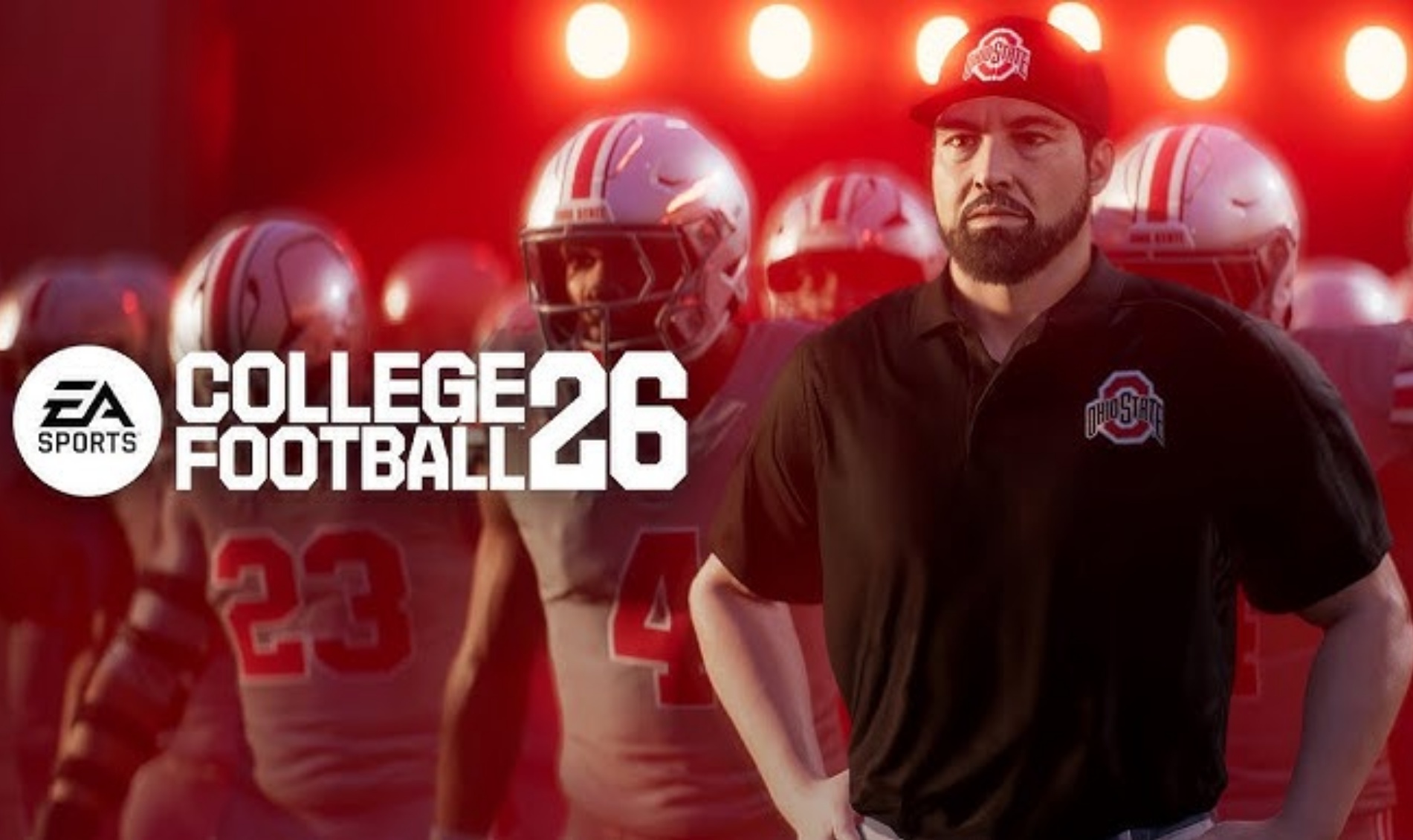
Every year, the top college football schools in the country compete against one another to recruit highly ranked prospects coming out of high school. The current college football offseason, however, is looking a little different. Athletes are still being wooed by prestigious programs, but so are creators — and EA Sports College Football 26 is the main reason why.
College Football 26, which EA released on July 10, is the latest chapter in a video game franchise that dates back to the 90s. Early installments of the series rank among the best sports video games of all time, but the gridiron simulator was forced into dormancy after courts ruled that game publishers could not include amateur athletes who were (at the time) unable to profit from depictions of their likenesses.
The advent of name, image, and likeness (NIL) deals for college athletes changed the narrative. As the value of NIL deals skyrocketed, EA chose to bring back College Football, and players rejoiced. College Football 25 became one of the most-played games of the year.

Subscribe to get the latest creator news
College Football 26 is here, so it’s time for creators to make The Decision.
EA paid out millions to athletes to license their likenesses for use in its fan-favorite franchise. But the players aren’t the only ones to benefit from this gold rush — gamers are cashing in, too.
The Athletic reported that Bordeaux, a popular College Football creator on YouTube, received personalized packages from schools that wanted him to play for their teams on his channel. The bidding environment resembled the feeding frenzy that surrounds coveted high school recruits, and the University of Nebraska ultimately reaped rewards when Bordeaux chose to play as the Cornhuskers in College Football 25.
Now, with the next chapter of the sports simulator out, Bordeaux is once again bringing back his most visible formats. He recently posted an “imperialism” video that pits college football powerhouses against one another in search of territorial expansion.
Bordeaux is one of several creators turning College Football videos into a full-time job. “It shows how deep people’s love for their team is that they were so interested in what a random guy on the internet was going to do, because it could be their team,” he told The Athletic.
Creators are the new blue turf
In 1986, Boise State University covered its football field in bright blue artificial turf. Initially, the colorful field was a mere curiosity, but then something funny happened: Boise State started winning a lot of football games. Since 1999, the Broncos have brought 16 conference championships to the Idaho capital.
The correlation between the installation of blue turf and the reversal of Boise State’s football fortunes could be a coincidence, but the unique field allowed the Broncos to stand out, both literally and figuratively. When you have one of the best attractions for football fans inside your stadium, it helps convince players to come play for a school they may have otherwise ignored.
In the 2020s, creators are doing for schools what blue turf did for Boise State in the 90s and 00s. Features from popular gamers like Bordeaux draw attention to Division I football programs, giving them an edge in the recruiting game.
It’s not just football, either
Among many other creative projects, author and Vlogbrother John Green has become a fan of English soccer club AFC Wimbledon, his go-to choice in sim games like Football Manager. Green’s Wimby affinity started in pixelated fashion, but it has since extended to the real world. After buying a sponsorship on Wimbledon uniforms and helping the club sign new players, the elder Green brother took his fandom to the next level by acquiring a minority stake in the club.
For Green, Wimbledon ownership is a fun diversion that also entertains his fans. But for the club, support from a big-name creator is crucial. As some European clubs fold due to poor financial circumstances, others are seeing celebrity affiliation as a long-term survival strategy.
Thanks to the current nature of the sports business, anyone with a significant following can become involved in real-world operations. John Green and Bordeaux are two of the first examples of that trend — but they won’t be the last.
NIL
Crackdown on NIL Collectives Might Reshape the College Sports Scene
Crackdown on NIL Collectives Could Reshape College Sports Landscape A new enforcement agency in college sports has drawn a firm line regarding the regulation of name, image, and likeness (NIL) payments to athletes — a move that could dismantle how many school-affiliated collectives currently operate. On Thursday, the College Sports Commission (CSC) issued new guidance […]
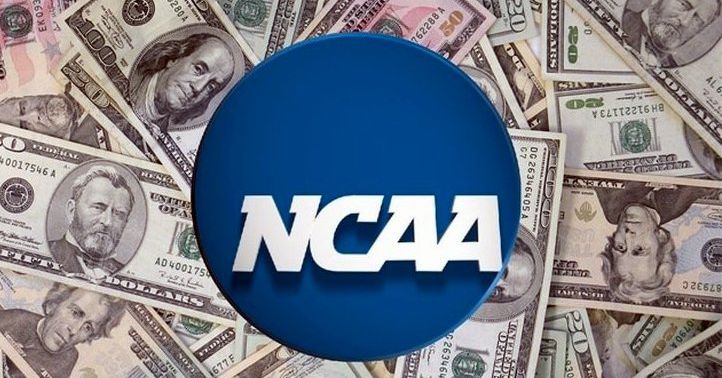
Crackdown on NIL Collectives Could Reshape College Sports Landscape
A new enforcement agency in college sports has drawn a firm line regarding the regulation of name, image, and likeness (NIL) payments to athletes — a move that could dismantle how many school-affiliated collectives currently operate.
On Thursday, the College Sports Commission (CSC) issued new guidance that significantly narrows what qualifies as a “valid business purpose” for NIL deals. The announcement came just days after the $2.8 billion House v. NCAA settlement took effect on July 1, establishing a clearinghouse called NIL Go to review third-party deals exceeding $600.
The goal is to prevent schools from circumventing the new $20.5 million revenue-sharing cap by routing funds through booster-backed collectives.
According to the CSC, any entity whose primary function is paying athletes — rather than offering legitimate goods or services to the public — fails to meet NIL Go’s standards. This includes collectives that host events or sell merchandise primarily to fund player payments. Even if these events are open to the public or involve promotional efforts, the CSC says they still don’t qualify.
“For somebody to just slide you a few dollars because they want you to come or stay at a certain school and call it NIL — that’s make-believe,” Purdue Athletic Director Mike Bobinski said in an interview with NBC Sports.
The ruling has sent shockwaves through the NIL ecosystem. In the four years since NIL deals became legal, school-affiliated collectives have funneled hundreds of millions of dollars into athlete compensation — often functioning as unofficial arms of athletic departments. These groups have paid athletes for appearances, endorsements, and social media promotions. But with the CSC now rejecting most of these deals, that model appears to be collapsing.
A memo sent to Division I athletic directors clarified the new standard: agreements with collectives primarily created to pay athletes or benefit specific schools will no longer be approved. While external NIL deals are still allowed, they must be with companies offering real products or services to the general public and must reflect fair market value.
The backlash was immediate. The Collective Association, which represents NIL collectives nationwide, called the CSC’s interpretation “misguided,” arguing it ignores both legal precedent and the economic realities of college athletics. The group claimed collectives are essential to athlete support and are being unfairly targeted.
Adding to the frustration, collective leaders like Dalton K. Forsythe of Utah State’s Blue A Collective reported widespread rejections of submitted NIL deals. “Nearly 100 percent of collective-backed NIL deals are being denied,” Forsythe posted on X, citing inconsistent standards and poor communication from NIL Go.
In response, some top programs are already adjusting. Collectives affiliated with Colorado, Alabama, Notre Dame, Georgia, and others have announced shutdowns. Meanwhile, schools like Ohio State, Georgia, and Illinois are partnering with Learfield — a long-established media and licensing firm — to ensure NIL deals comply with the new rules.
Despite the chaos, NIL Go has approved over 1,500 deals since launching in June, ranging in value from hundreds to millions of dollars. More than 12,000 athletes and 1,100 institutions are already registered. However, most approved transactions have involved athletes and legitimate businesses — not donor collectives.
Ultimately, the CSC has made clear that the future of NIL lies in traditional sponsorships and commercial endorsements, not donor-funded payouts. Whether courts will uphold these rules — or whether athletes will challenge them on antitrust grounds — remains to be seen. For now, though, the days of collectives writing large checks behind the scenes may be coming to an end.
NIL Crackdown Could Shake Up the Mountain West Conference
The College Sports Commission’s new enforcement guidance is expected to significantly impact the Mountain West Conference (MWC), where many schools have relied on donor-driven collectives to remain competitive in a rapidly evolving landscape.
With the July 1 implementation of the House v. NCAA settlement and the launch of NIL Go, third-party deals over $600 now require approval and must meet strict new standards. At the core is a simple requirement: NIL deals must have a “valid business purpose” and reflect “fair market value.” This change effectively invalidates many of the collective-based agreements MWC schools have used to attract and retain talent.
Why It Matters in the MWC
Unlike Power Five schools with massive alumni networks, national brand recognition, and lucrative TV deals, Mountain West programs have depended heavily on local businesses and booster collectives for NIL funding. These groups have helped schools compete for transfer portal athletes or retain breakout stars vulnerable to poaching.
That strategy is now at risk.
According to the CSC’s latest memo, any NIL deal where a collective pays an athlete merely for attending an event or helping promote merchandise — a common practice among MWC collectives — no longer meets the “valid business purpose” threshold. The Commission argues these transactions are not tied to legitimate commercial activity but instead serve as disguised payments, making them clear violations under the new rules.
Potential Fallout for Mountain West Schools
This shift could hit programs like Boise State, Fresno State, San Diego State, and Utah State particularly hard. These schools have developed strong football reputations but lack the deep financial backing of Big Ten or SEC institutions.
- Boise State has relied on a passionate fan base and collective support to maintain its status as a Group of Five powerhouse. Without that funding source, Boise could fall behind in the NIL arms race.
- Utah State’s Blue A Collective is already feeling the pressure. Director Dalton Forsythe reports that nearly all of their NIL submissions are being rejected under the new rules, calling the standards “unclear and unrealistic.”
- Fresno State and San Diego State have used competitive NIL offers to retain local talent, but that ability may diminish without collective-based funding, making it harder to keep players from transferring out.
Shifting the Strategy
With collective-led NIL deals under fire, Mountain West programs will need to shift toward compliant, athlete-to-business partnerships. But that transition won’t be easy. Local businesses in MWC markets often lack the advertising budgets or incentive to sign athletes without school involvement.
Some Power Five schools have already moved to fill this gap by partnering with companies like Learfield to streamline compliant NIL opportunities. Mountain West institutions may need to follow suit, though doing so with fewer resources will be a steep challenge.
The Bigger Picture
This shake-up may further widen the gap between Power Five and Group of Five programs. Although the House settlement allows schools to compensate athletes up to $20.5 million annually directly, most MWC institutions don’t have the budget flexibility to fully utilize that cap.
Mountain West Commissioner Gloria Nevarez said the league is considering implementing a revenue-sharing minimum starting in the 2025-26 season. If approved, the plan would ensure at least a baseline level of NIL funding across the conference. However, lingering legal issues over departing members and the lack of a finalized media rights deal leave much uncertain.
Nevarez emphasized that protecting competitive balance is critical, especially as NIL compensation becomes central to recruiting.
Without collectives as a workaround, the Mountain West risks becoming a feeder league, developing top talent only to watch it transfer to schools offering better NIL opportunities.
In short, unless national rules shift again — or MWC schools find new, sustainable NIL models — the league’s ability to compete at a national level could suffer dramatically under this new NIL landscape.
As everything in the NCAA college sports scene, you just don’t know what a day will bring. It’s like this big NCAA college soap opera from a fan’s perspective.
As the NIL landscape undergoes its most dramatic shift yet, the Mountain West Conference finds itself at a crossroads.
The new rules may level the playing field in theory, but in practice, they risk sidelining programs that have used creativity and community support to stay relevant.
With traditional collectives on the chopping block and commercial partnerships harder to come by in smaller markets, MWC schools must now adapt quickly—or risk falling further behind in a system increasingly tilted toward the power conferences.
The next chapter in college athletics will be defined not just by talent on the field, but by who can navigate the off-field rules best.
NIL
CBS Sports ranks Big 12 Football head coaches’ seats from hottest to coolest
Fresh off of Big 12 Media Days in Frisco, Tex., CBS Sports has ranked Big 12 football head coaches’ seats from hottest to coolest. Unlike other conferences, however, there aren’t many contenders in the conference to truly be on the hot seat. Consistent play and new hires litter the Big 12. That means a change […]

Fresh off of Big 12 Media Days in Frisco, Tex., CBS Sports has ranked Big 12 football head coaches’ seats from hottest to coolest. Unlike other conferences, however, there aren’t many contenders in the conference to truly be on the hot seat.
Consistent play and new hires litter the Big 12. That means a change in leadership following this upcoming season would be a little surprising, to say the least. Here are CBS Sports’ rankings from 1-16:
After 20 seasons in Stillwater, Mike Gundy‘s tenure at Oklahoma State could be coming to an end. This would be a huge change for the program.
“After a prolific playing career and leading the program to 169 victories as a head coach, Gundy is Oklahoma State football,” Athlon Sports wrote in its recent College Football Preview magazine for the 2025 season. “But after last year’s 3-9 record and reworked contract that included a pay cut, it’s clear that Gundy is under some pressure.”
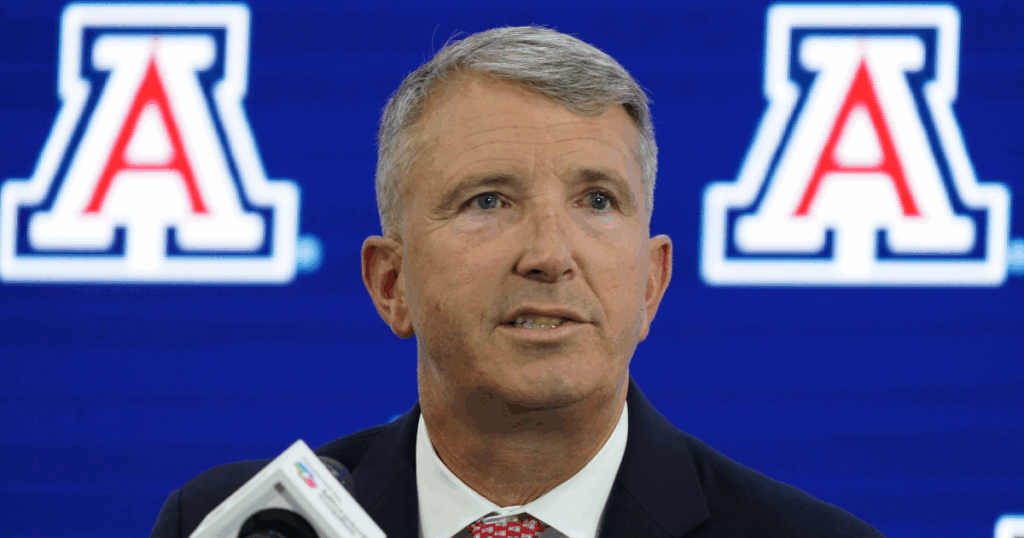
After just one season, Arizona‘s Brent Brennan is on the hot seat. Brennan, who made the jump from San Jose State to Arizona prior to its 2024 campaign, led the Wildcats to a lowly 4-8 record. Its eight losses came by an average of 23.9 points per game.
“Brennan inherited a roster capable of contending for the Big 12 title,” Athlon Sports wrote. “Instead, the Wildcats regressed to 4-8, with six losses by 20 points or more. Add in a new athletic director who didn’t hire Brennan, and it’s clear that the second-year coach needs to show marked improvement.”
Cincinnati is entering year three of the Scott Satterfield era and things still look like a mess. The Bearcats are just 8-16 (4-14) over his first two seasons, a far cry from when they made the College Football Playoff in 2021.
“Satterfield was a surprising hire for Cincinnati following a 17-19 record in his final three years at Louisville,” Athlon Sports wrote. “Through two seasons, Satterfield has struggled to find his footing with an 8-16 mark.”
Three seasons removed from taking TCU to the College Football Playoff National Championship Game, Sonny Dykes could be hanging on the hot seat. Following that 13-2 season, the Horned Frogs are just 14-11 over the past two years.
“It’s crazy to say this about a team who played in the national championship, but this is the season that really matters when it comes to Sonny,” an anonymous Big 12 coach told Athlon Sports. “They built depth and recruited to fill every deficiency on that five-win team. Now what? They have the best signing classes in the league, and that matters because they’re also building NIL to keep the kids they want.”
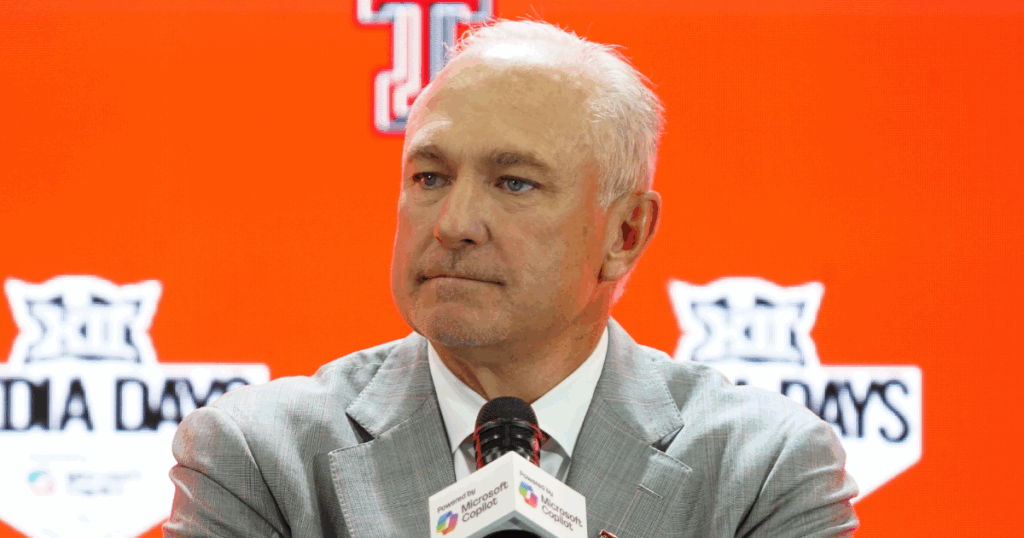
Joey McGuire‘s first three seasons have been consistent, as the Red Raiders have won at least seven games in all three years, along with two bowl victories. However, if McGuire doesn’t take Texas Tech to that next level this season, his seat could get a little warm.
“If they’re not a double-digit win team this season, it will be considered a failure,” an anonymous Big 12 coach told Athlon Sports. “It’s hard to know if that’s fair, or if spending like this is a smart long-term strategy.”
Dave Aranda and Baylor broke through in his second season at the helm (2021), winning 12 games and the Big 12 Championship. Since then, however, the Bears are just 17-21.
With a strong returning cast, led by quarterback Sawyer Robertson, another disappointing season could turn heads amongst the suits in Waco. The Bears look to avoid that being the case.
Nos. 7-16
7. Scott Frost, UCF Knights (19-7)
8. Rich Rodriguez, West Virginia Mountaineers (60-26)
9. Willie Fritz, Houston Cougars (4-8)
10. Kalani Sitake, BYU Cougars (72-43)
11. Lance Leipold, Kansas Jayhawks (22-28)
12. Chris Klieman, Kansas State Wildcats (48-28)
13. Kyle Whittingham, Utah Utes (167-86)
14. Matt Campbell, Iowa State Cyclones (64-51)
15. Deion Sanders, Colorado Buffaloes (13-12)
16. Kenny Dillingham, Arizona State Sun Devils (14-12)
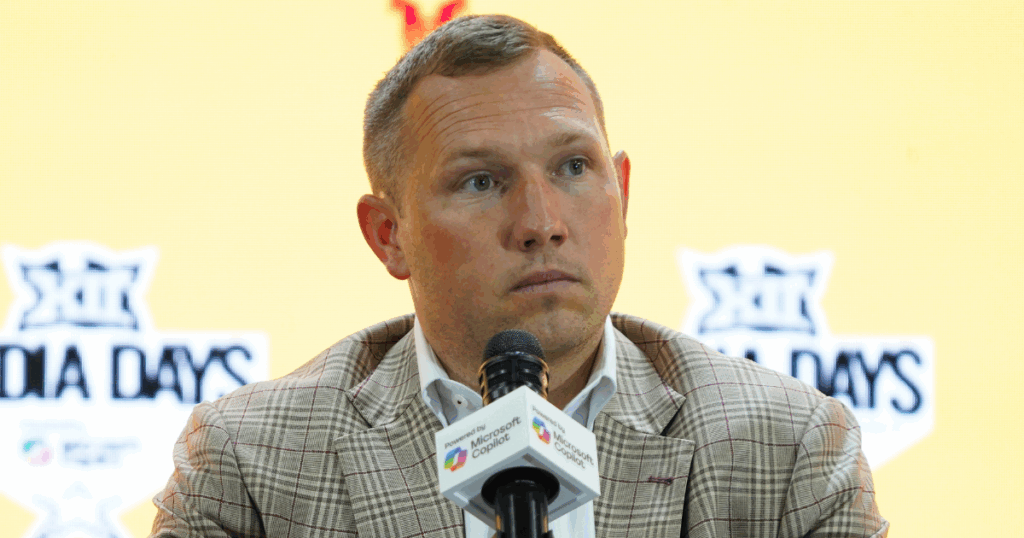
NIL
Federal lawmakers propose regulation for college NIL
MONTGOMERY, Ala. (WSFA) – Federal lawmakers are pushing to bring nationwide consistency to how college athletes profit from their name, image, and likeness — commonly known as NIL. Rep. Shomari Figures, who represents Alabama’s 2nd Congressional District, introduced a bill in Congress this week aimed at creating clear national standards for student-athlete compensation, naming it […]

MONTGOMERY, Ala. (WSFA) – Federal lawmakers are pushing to bring nationwide consistency to how college athletes profit from their name, image, and likeness — commonly known as NIL.
Rep. Shomari Figures, who represents Alabama’s 2nd Congressional District, introduced a bill in Congress this week aimed at creating clear national standards for student-athlete compensation, naming it the Student Compensation and Opportunity through Rights and Endorsements (SCORE) Act.
“The environment and the landscape of college athletics have changed drastically over the past several years, especially since the Supreme Court decision that came out,” Figures said. “There was a huge need here to stabilize what was going on.”
The SCORE Act extends beyond paychecks. It includes provisions for career development, comprehensive medical care, and protections for athletes who are injured — efforts that Figures said are crucial to long-term success both on and off the field.
“Making sure that student-athletes are not just prepared to participate on the field or the court, but making sure they are there at the end of the day to receive degrees,” Figures said.
The bill also aims to level the playing field for colleges and universities nationwide, ensuring every athletic program operates under the same set of rules.
“It removes this landscape of what some have referred to as the Wild, Wild West of NIL,” Figures said. “It brings everything under … some very straightforward guidelines.”
The proposal has drawn bipartisan support. Sen. Tommy Tuberville, a former college football coach, said smaller schools have been at a disadvantage in the current NIL environment.
“There are some teams that can’t afford to do that,” Tuberville said. “We want to make it fair for everybody.”
Figures said the bill is still a work in progress, but he remains optimistic.
“We’re hopeful to see some progress here,” he said. “There will still be some changes, some things that have to be further discussed. We want this bill to be the strongest it can be to provide the best protections for our student-athletes.”
Not reading this story on the WSFA News App? Get news alerts FASTER and FREE in the Apple App Store and the Google Play Store!
Copyright 2025 WSFA. All rights reserved.
NIL
Federal lawmakers propose regulation for college NIL
MONTGOMERY, Ala. (WSFA) – Federal lawmakers are pushing to bring nationwide consistency to how college athletes profit from their name, image, and likeness — commonly known as NIL. Rep. Shomari Figures, who represents Alabama’s 2nd Congressional District, introduced a bill in Congress this week aimed at creating clear national standards for student-athlete compensation, naming it […]

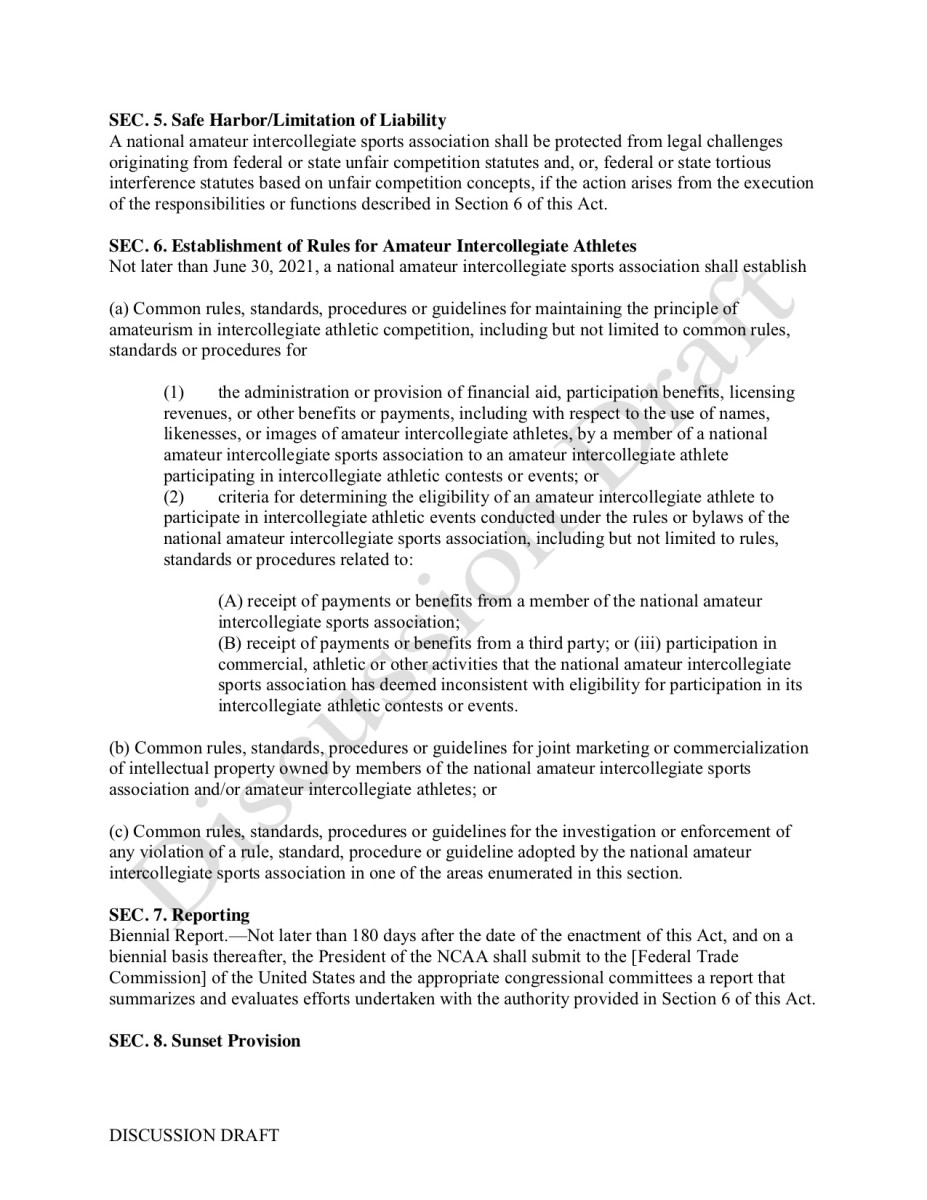
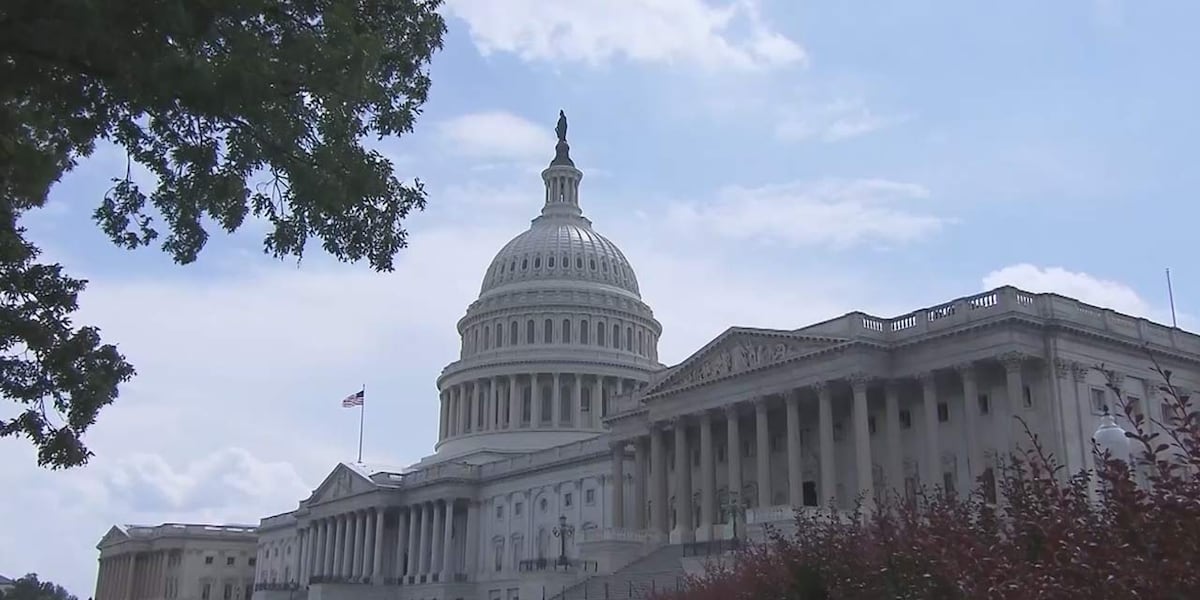
MONTGOMERY, Ala. (WSFA) – Federal lawmakers are pushing to bring nationwide consistency to how college athletes profit from their name, image, and likeness — commonly known as NIL.
Rep. Shomari Figures, who represents Alabama’s 2nd Congressional District, introduced a bill in Congress this week aimed at creating clear national standards for student-athlete compensation, naming it the Student Compensation and Opportunity through Rights and Endorsements (SCORE) Act.
“The environment and the landscape of college athletics have changed drastically over the past several years, especially since the Supreme Court decision that came out,” Figures said. “There was a huge need here to stabilize what was going on.”
The SCORE Act extends beyond paychecks. It includes provisions for career development, comprehensive medical care, and protections for athletes who are injured — efforts that Figures said are crucial to long-term success both on and off the field.
“Making sure that student-athletes are not just prepared to participate on the field or the court, but making sure they are there at the end of the day to receive degrees,” Figures said.
The bill also aims to level the playing field for colleges and universities nationwide, ensuring every athletic program operates under the same set of rules.
“It removes this landscape of what some have referred to as the Wild, Wild West of NIL,” Figures said. “It brings everything under … some very straightforward guidelines.”
The proposal has drawn bipartisan support. Sen. Tommy Tuberville, a former college football coach, said smaller schools have been at a disadvantage in the current NIL environment.
“There are some teams that can’t afford to do that,” Tuberville said. “We want to make it fair for everybody.”
Figures said the bill is still a work in progress, but he remains optimistic.
“We’re hopeful to see some progress here,” he said. “There will still be some changes, some things that have to be further discussed. We want this bill to be the strongest it can be to provide the best protections for our student-athletes.”
Not reading this story on the WSFA News App? Get news alerts FASTER and FREE in the Apple App Store and the Google Play Store!
Copyright 2025 WSFA. All rights reserved.
NIL
New agency rejecting some NIL deals with donor
The new agency in charge of regulating name, image, likeness deals in college sports sent a letter to schools Thursday saying it had rejected deals between players and donor-backed collectives formed over the past several years to funnel money to athletes or their schools. × This page requires Javascript. Javascript is required for you to […]


The new agency in charge of regulating name, image, likeness deals in college sports sent a letter to schools Thursday saying it had rejected deals between players and donor-backed collectives formed over the past several years to funnel money to athletes or their schools.
-

 Technology2 weeks ago
Technology2 weeks agoPet fitness and wellness trends for a healthier and happier dog
-

 College Sports2 weeks ago
College Sports2 weeks agoWAC to Rebrand to UAC, Add Five New Members in 2026
-

 Motorsports2 weeks ago
Motorsports2 weeks agoWhy Cosmetics are Making Up for Lost Time in Women’s Sports
-

 Professional Sports3 weeks ago
Professional Sports3 weeks agoFrancis Ngannou sends Dana White a message following Jon Jones' shock UFC retirement
-

 College Sports2 weeks ago
College Sports2 weeks agoA new era of Dickinson hockey begins behind the bench – The Dickinson Press
-

 Health2 weeks ago
Health2 weeks agoFlorida assault survivor shares hope for change with new mental health law
-

 Sports3 weeks ago
Sports3 weeks agoSEC Conference imposing a fine will create the opposite effect.
-

 Motorsports2 weeks ago
Motorsports2 weeks agoNASCAR This Week – Patriot Publishing LLC
-

 Motorsports1 week ago
Motorsports1 week agoTeam Penske names new leadership
-

 Youtube3 weeks ago
Youtube3 weeks agoFunniest MLB rain delay moments













 | Get Up
| Get Up


















